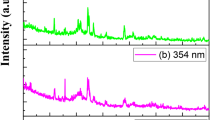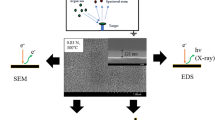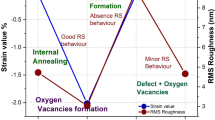Abstract
The efficiency of the thermoelectric devices is limited by the properties of n- and p-type semiconductors. Effective thermoelectric materials have a low thermal conductivity and a high electrical conductivity. The performance of the thermoelectric materials and devices is shown by a dimensionless figure of merit, ZT = S2σT/K, where S is the Seebeck coefficient, σ is the electrical conductivity, T is the absolute temperature and K is the thermal conductivity. In this study we prepared the thermoelectric generator device of SiO2/SiO2+ Au multi-layer super-lattice films using the ion beam assisted deposition (IBAD). In order to determine the stoichiometry of the elements of SiO2 and Au in the grown multilayer films and the thickness of the grown multi-layer films Rutherford Backscattering Spectrometry (RBS) and RUMP simulation software package was used. The 5 MeV Si ion bombardments was performed to make quantum clusters in the multilayer super-lattice thin films to decrease the cross plane thermal conductivity, increase the cross plane Seebeck coefficient and cross plane electrical conductivity. To characterize the thermoelectric generator devices before and after Si ion bombardments we measured the cross-plane Seebeck coefficient, the cross-plane electrical conductivity, and the cross-plane thermal conductivity for different fluences.
Similar content being viewed by others
References
S. Budak C. Muntele B. Zheng D. Ila Nuc. Instr. and Meth. B 261 (2007) 1167.
Brian C. Scales Science 295 (2002) 1248.
G. Slack in: D. M. Rowe (Ed.), CRC Handbook of Thermoelectrics, CRC Press, 1995, p.407.
S. Guner S. Budak R. A. Minamisawa C. Muntele D. Ila Nuc. Instr. and Meth. B 266 (2008) 1261.
B C. -K. Huang J. R. Lim J. Herman M. A. Ryan J. -P. Fleural N. V. Myung Electrochemical Acta 50 (2005) 4371.
T.M. Tritt ed., Recent Trends in Thermoelectrics, in Semiconductors and Semimetals, 71, (2001).
L. R. Holland R. C. Smith J. Apl. Phys. 37 (1966) 4528.
D. G. Cahill M. Katiyar J. R. Abelson Phys. Rev.B 50 (1994) 6077.
T. B. Tasciuc A.R. Kumar G. Chen Rev. Sci. Instrum. 72 (2001) 2139.
L. Lu W. Yi, D. L. Zhang Rev. Sci. Instrum. 72 (2001) 2996.
J. F. Ziegler J. P. Biersack U. Littmark The Stopping Range of Ions in solids, Pergamon Press, New York, 1985.
W. K. Chu J. W. Mayer M. -A. Nicolet Backscattering Spectrometry, Academic Press, New York, 1978.
L. R. Doolittle M. O. Thompson RUMP, Computer Graphics Service, 2002.
Author information
Authors and Affiliations
Rights and permissions
About this article
Cite this article
Pugh, M., Hill, R., James, B. et al. Fabrication and Characterization of Thermoelectric Generators From SiO2/SiO2+Au Nano-layered Superlattices. MRS Online Proceedings Library 1181, 123–127 (2009). https://doi.org/10.1557/PROC-1181-DD13-05
Published:
Issue Date:
DOI: https://doi.org/10.1557/PROC-1181-DD13-05




